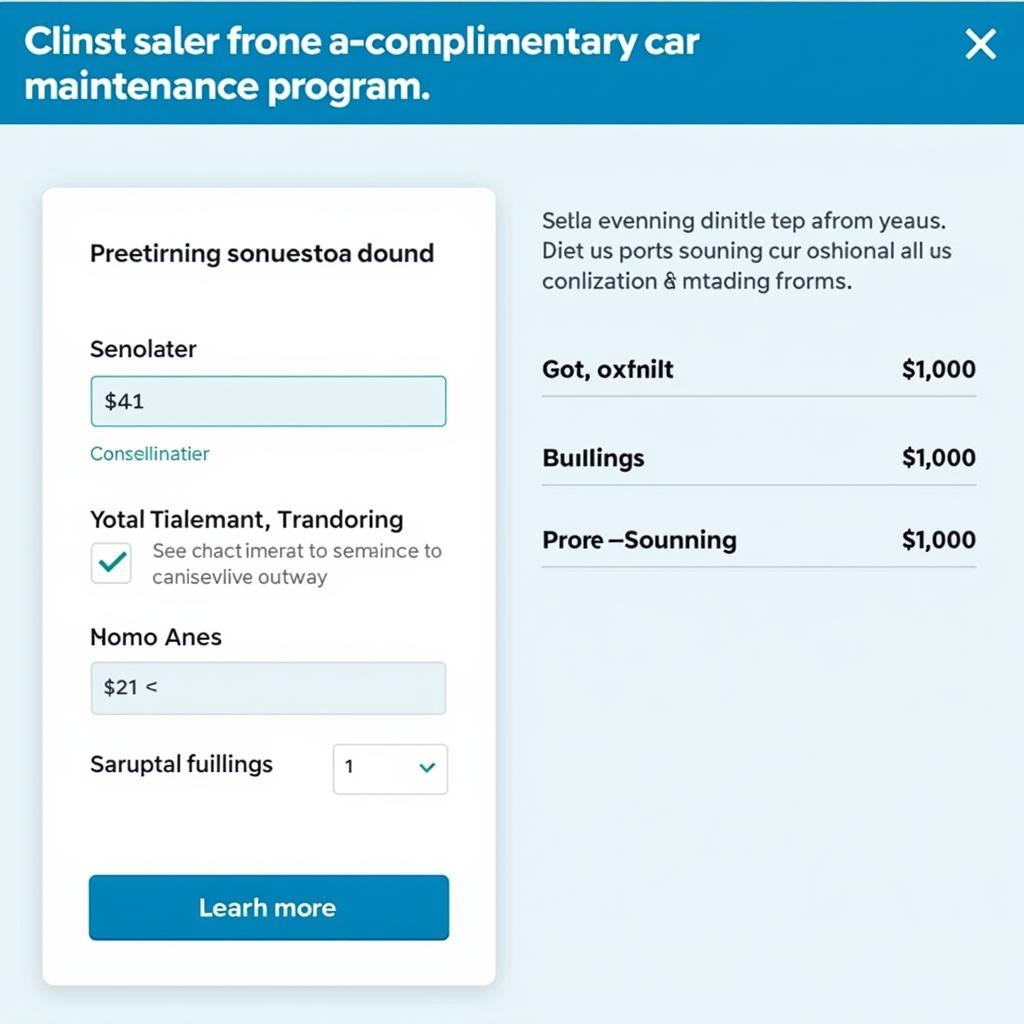Car maintenance at 50,000 miles is a crucial milestone for your vehicle’s health and longevity. Ignoring essential maintenance tasks at this stage can lead to costly repairs down the road. This guide will provide you with a comprehensive understanding of the recommended maintenance procedures for your car at 50,000 miles. You can also check out our guide for 5000 miles car maintenance.
Why 50,000 Miles is a Critical Service Interval
50,000 miles often marks the point where many components begin to show wear and tear. Proactive maintenance at this mileage can prevent small issues from escalating into major problems. Addressing these issues now will ensure optimal performance, fuel efficiency, and safety.
Key Maintenance Checks at 50,000 Miles
Several essential checks should be performed at the 50,000-mile mark. These checks cover various systems, including the engine, transmission, brakes, and suspension.
Fluid Changes and Inspections
- Engine Oil and Filter: An oil change is vital. Old oil loses its lubricating properties, increasing friction and engine wear.
- Transmission Fluid: Check the transmission fluid level and condition. If it’s dark or smells burnt, a transmission fluid change is recommended.
- Coolant: Ensure the coolant is topped off and consider a coolant flush to prevent corrosion and overheating.
- Brake Fluid: Brake fluid absorbs moisture over time, reducing braking efficiency. Have it checked and replaced if necessary.
- Power Steering Fluid: Inspect the power steering fluid level and look for leaks.
 Checking Fluids at 50,000 Miles
Checking Fluids at 50,000 Miles
Brake System Inspection
- Brake Pads and Rotors: Inspect the brake pads for wear and measure their thickness. Rotors should be checked for warping or excessive wear.
- Brake Lines and Hoses: Look for leaks or cracks in the brake lines and hoses.
Suspension and Steering Components
- Shocks and Struts: Inspect shocks and struts for leaks and wear. Worn shocks and struts can affect handling and ride comfort.
- Steering System: Check for play in the steering wheel and inspect tie rod ends and ball joints for wear.
Filters and Belts
- Air Filter: A clogged air filter restricts airflow to the engine, reducing performance and fuel economy. Replace it if necessary.
- Cabin Air Filter: Replace the cabin air filter to improve air quality inside the vehicle.
- Serpentine Belt: Inspect the serpentine belt for cracks or fraying. A broken belt can disable your engine.
Tires
- Tire Rotation and Balance: Rotate and balance your tires to promote even wear and extend their lifespan.
- Tire Pressure: Ensure proper tire inflation for optimal fuel efficiency and handling.
- Wheel Alignment: Check your wheel alignment to prevent uneven tire wear and ensure proper handling.
Electrical System
- Battery: Have your battery tested to ensure it’s holding a charge.
- Lights: Check all exterior and interior lights for proper operation.
What happens if I skip 50,000-mile maintenance?
Skipping your 50,000-mile maintenance can have significant consequences, including decreased performance, reduced fuel economy, and potentially costly repairs. Read our guides on 50 000 miles car maintenance and 50000 miles maintenance on a car for more insights. For older vehicles, check out what to do maintenance for 150000 miles older car. You might also find helpful information in our guide for car maintenance at 150 000 miles.
“Neglecting routine maintenance can turn a minor issue into a major headache, and believe me, I’ve seen it all,” says John Smith, ASE Certified Master Technician. “Staying on top of your car’s maintenance schedule is the best way to protect your investment and avoid unexpected breakdowns.”
Conclusion
Car maintenance at 50,000 miles is a crucial investment in your vehicle’s long-term health. Following the recommended maintenance schedule can prevent costly repairs and ensure your car runs smoothly for years to come. Remember, preventive maintenance is always cheaper than reactive repairs. Contact us at AutoTipPro for expert advice and assistance. Our phone number is +1 (641) 206-8880 and our office is located at 500 N St Mary’s St, San Antonio, TX 78205, United States.






Leave a Reply